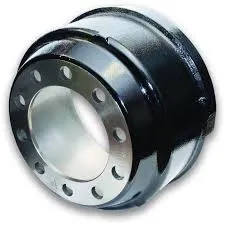Feb . 15, 2025 01:43
Back to list
drum brake vs disc brake difference
Drum brakes and disc brakes are pivotal components in the automotive industry, each offering unique attributes that cater to specific driving requirements and preferences. For car enthusiasts, understanding the nuances between these two braking systems is not merely academic; it's a cornerstone of vehicle optimization and safety.
In terms of reliability and maintenance, drum brakes require less frequent servicing due to their enclosed nature, which protects them from environmental degradation. However, when maintenance is required, such as adjusting the brake shoes or replacing components, it tends to be more intricate compared to the straightforward nature of servicing disc brakes, wherein pad swaps are easily accomplished without disassembly of the entire system. The authoritativeness in choosing between these two systems revolves around the vehicle’s intended purpose. Heavy-duty trucks and some economy cars leverage drum brakes for their durability and cost-effectiveness, which is essential for rear-wheel braking. Conversely, vehicles that prioritize performance and safety opt for disc brakes for their unmatched stopping precision and reliability. From a trustworthiness perspective, automakers' emphasis on safety often leads to the inclusion of both systems' attributes in a single vehicle configuration, employing disc brakes at the front for precise control and drum brakes at the rear for stability and cost efficiency. This hybrid approach capitalizes on the strengths of both systems, offering consumers the best of both worlds—a testament to the automotive industry's commitment to safety and performance. Ultimately, the choice between drum and disc brakes is dictated by various factors including driving habits, vehicle type, and performance needs. Understanding these differences not only enhances one's appreciation of automotive engineering but also informs better purchasing and maintenance decisions. Whether for the everyday commuter, the performance aficionado, or the safety-conscious driver, both brake types continue to play integral roles in modern vehicular dynamics, attaining a balance of tradition and innovation.


In terms of reliability and maintenance, drum brakes require less frequent servicing due to their enclosed nature, which protects them from environmental degradation. However, when maintenance is required, such as adjusting the brake shoes or replacing components, it tends to be more intricate compared to the straightforward nature of servicing disc brakes, wherein pad swaps are easily accomplished without disassembly of the entire system. The authoritativeness in choosing between these two systems revolves around the vehicle’s intended purpose. Heavy-duty trucks and some economy cars leverage drum brakes for their durability and cost-effectiveness, which is essential for rear-wheel braking. Conversely, vehicles that prioritize performance and safety opt for disc brakes for their unmatched stopping precision and reliability. From a trustworthiness perspective, automakers' emphasis on safety often leads to the inclusion of both systems' attributes in a single vehicle configuration, employing disc brakes at the front for precise control and drum brakes at the rear for stability and cost efficiency. This hybrid approach capitalizes on the strengths of both systems, offering consumers the best of both worlds—a testament to the automotive industry's commitment to safety and performance. Ultimately, the choice between drum and disc brakes is dictated by various factors including driving habits, vehicle type, and performance needs. Understanding these differences not only enhances one's appreciation of automotive engineering but also informs better purchasing and maintenance decisions. Whether for the everyday commuter, the performance aficionado, or the safety-conscious driver, both brake types continue to play integral roles in modern vehicular dynamics, attaining a balance of tradition and innovation.
Next:
Latest news
-
Brake Drums for Trucks | OEM-Grade, Factory DirectNewsNov.10,2025
-
High-Performance Brake Drums for Trucks | OEM & ISONewsNov.10,2025
-
Brake Drums Built to Last — OEM-Grade, Balanced for TrucksNewsNov.10,2025
-
Brake Drums for Trucks – OEM-Grade, Durable, Low NoiseNewsNov.10,2025
-
Brake Drums for Trucks | OEM, ISO-Certified, Fast DeliveryNewsNov.10,2025
-
Brake Drums: OEM-Grade, Precision Balanced, Factory DirectNewsNov.03,2025
-
Brake Drums: Heavy-Duty, OEM-Grade, Precision-BalancedNewsNov.03,2025


